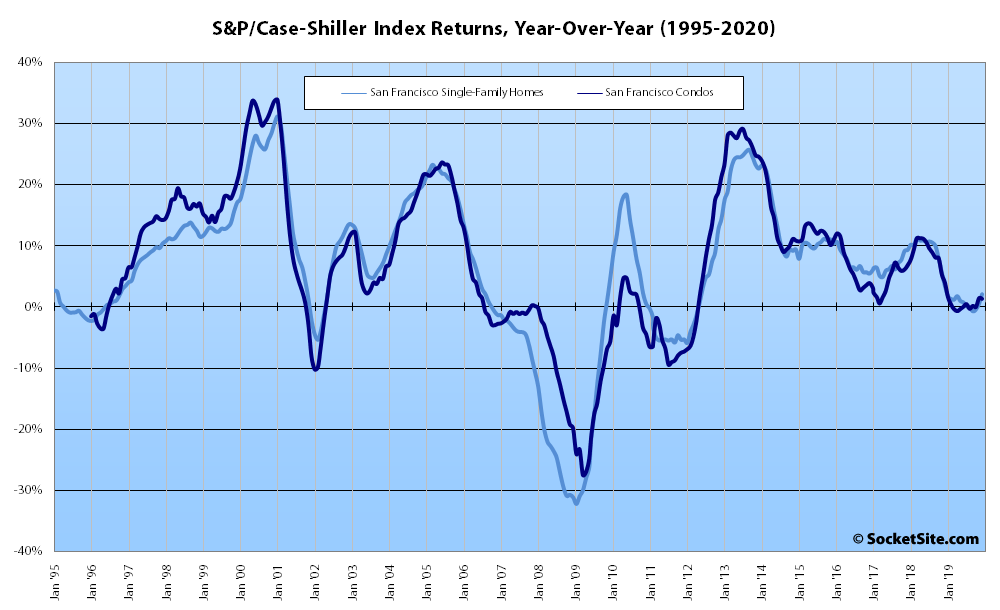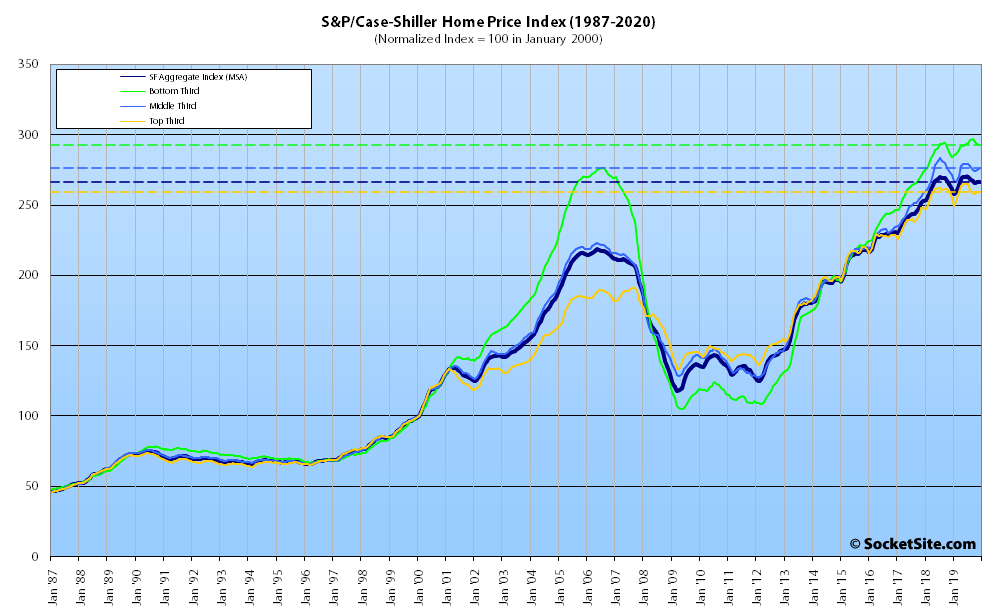Having eked out a 0.2 percent gain last November, the S&P CoreLogic Case-Shiller Index for single-family home values within the San Francisco Metropolitan Area – which includes the East Bay, North Bay and Peninsula – was unchanged in December, ending the year up 2.1 percent on a year-over-year basis but 1.3 percent below peak.
At a more granular level, the index for the bottom, least expensive, third of the market ended the year up 2.9 percent on a year-over-year basis but slipped 0.3 percent in December and is 1.4 percent below peak; the index for the middle third of the market, which peaked in 2018, inched up 0.6 percent in December for a year-over-year gain of 1.8 percent but is 2.6 percent below peak; and having slipped 0.1 percent in December, the index for the top third of the market is now 2.3 percent below peak but managed to recorded a year-over-year gain of 1.5 percent at the end of 2019.
At the same time, the index for Bay Area condo values, which peaked last July, dropped 1.0 percent in December and is down 3.0 percent since mid-2018 but managed to end the year with a year-over-year gain of 1.3 percent.
Nationally, Phoenix is still leading the way in terms of home price gains, up 6.5 percent on a year-over-year basis, followed by Charlotte (up 5.3 percent) and Tampa (up 5.2 percent).
And of the top-20 metro areas tracked by the index, San Francisco ranked third to last in terms of year-over-year gains at 2.1 percent, ahead of only New York and Chicago, both of which ended the year up 1.0 percent, and versus an average gain of 3.8 percent nationwide.
Our standard SocketSite S&P/Case-Shiller footnote: The S&P/Case-Shiller home price indices include San Francisco, San Mateo, Marin, Contra Costa and Alameda in the “San Francisco” index (i.e., greater MSA) and are imperfect in factoring out changes in property values due to improvements versus appreciation (although they try their best).


